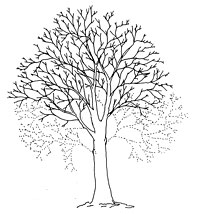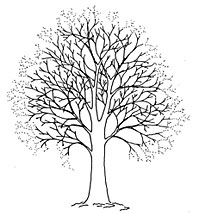About Our Tree Trimming/Pruning Service
Tree pruning, or tree trimming, is the most common practice for tree maintenance. It can also be one of the more critical factors in long-term tree health. When done correctly, pruning can alleviate safety concerns, improve tree structure and tree health, and make a tree more aesthetically pleasing while still reaching client goals.
There are several types of trimming and pruning techniques and procedures, all of which aim to accomplish one or more objectives. Some common tree pruning goals include providing clearance off of a structure or over a specified area(driveway, sidewalk, etc.), reducing potential for limb or tree failure, maintaining health, improving a view, influencing flower or fruit production, improving aesthetics, allowing more light and wind to pass through the canopy, and so on.
Industry standards regarding tree pruning say no more than 20%-25% of a tree’s foliage should be removed in a single growth season, and in some instances even less should be removed. When determining how much trimming your tree can likely tolerate, a Certified Arborist will consider if the tree is healthy, is still growing rapidly or has matured and slowed its growth, has had roots severed or damaged in the past, if it is combating a disease or pest infestation, or if the tree is a species tolerant of heavy pruning

These are the 3 most common trimming services

Crown Thinning
Crown thinning is the systematic, selective removal of a portion of smaller branches, usually at the outer crown, to produce a uniform density of foliage around an evenly spaced branch structure. It does not alter the overall size or shape of the tree however. Common reasons for crown thinning are to allow more wind, moisture, or light to pass through the tree, reduce wind resistance, or reduce weight.

Crown Elevating or Crown Raising
Crown elevating is the removal of the lowest branches and/or preparing of lower branches for future removal. Common reasons for elevating include increasing clearance under the canopy, increasing light transmission, or improving air circulation in the surrounding environment of the tree. Typically, crown raising focuses on the removal of smaller lateral limbs and should avoid removing larger parent limbs extending directly off the trunk.

Crown Reduction
Crown reduction is the systematic, selective removal of smaller limbs in order to reduce the tree’s height and/or canopy spread while retaining the main framework of the crown. Crown reduction may be used to reduce mechanical stress on individual branches or the whole tree, make the tree more suited to its immediate environment or to reduce the effects of shading and light loss, etc. Crown reduction should not be confused with ‘topping’, which is an indiscriminate, non-systematic, and harmful practice.
